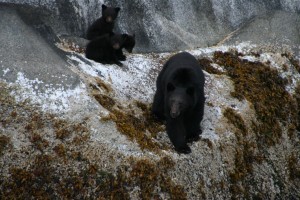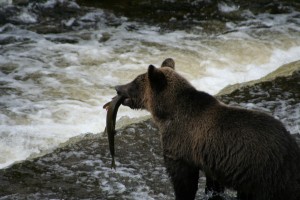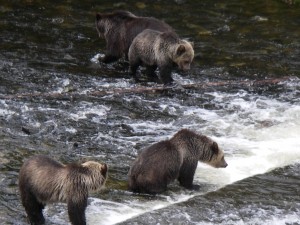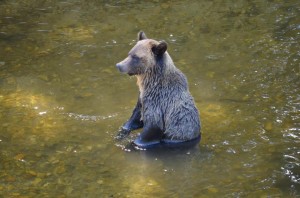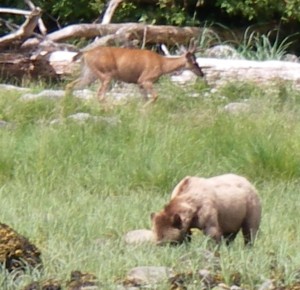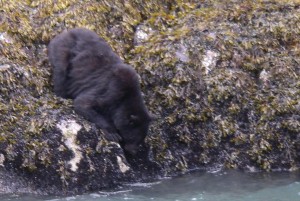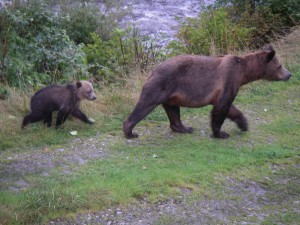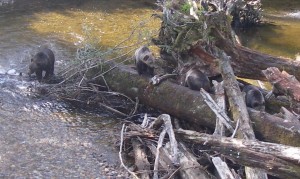
The grizzly bear viewing is not always about grizzlies fishing and eating salmon to fatten for the winter denning. While that is true for the adult bears the cubs in this case two year old cubs are like teenagers and much time is spent in play. Climbing the log jumble gym gives mom time to catch a meal that she can eat without having to share. It seems to work for this family as the photo was taken in late September and all appear to have a healthy layer of fat.
